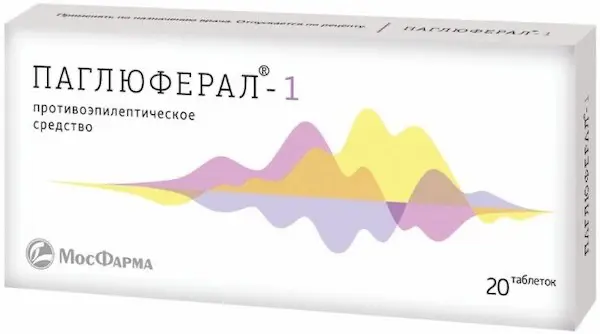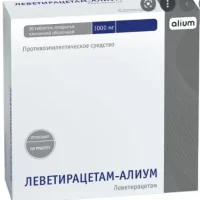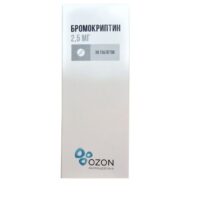Description
Pagluferal-1 Pharmacodynamics
It is a combined antiepileptic drug, the therapeutic effect of which is caused by the pharmacological properties of its constituent components.
Phenobarbital interacts with the “barbiturate” part of the benzodiazepine-GABAA-receptor complex, due to which it increases sensitivity of GABAA receptors to GABA and leads to opening of neuronal channels of chlorine ions, which increases their entry into the cell. Reduces the excitability of neurons of the epileptogenic focus and distribution of nerve impulses. Exhibits antagonism to a number of excitatory mediators (glutamate, etc.). Suppresses sensory zones of the cerebral cortex, reduces motor activity, depresses cerebral functions, including the respiratory center. Reduces the tone of the smooth muscles of the gastrointestinal tract. It has anticonvulsant, sedative, hypnotic and antispasmodic effect.
Caffeine-benzoate sodium increases reflex excitability of the spinal cord, excites respiratory and vasomotor centers, stimulates metabolic processes in organs and tissues, including muscles and central nervous system.
Papaverine hydrochloride is a myotropic antispasmodic agent and has a hypotensive effect. It reduces the tone and relaxes the smooth muscles of internal organs and vessels. Causes dilatation of arteries, promotes increased blood flow, including cerebral blood flow.
Calcium gluconate – makes up for the lack of calcium ions needed for the transmission of nerve impulses, reduction of skeletal and smooth muscles, myocardial activity, formation of bone tissue, blood clotting.
Bromisoval – has sedative and moderate sleeping pills. It depresses the central nervous system. It enhances inhibition processes and promotes their concentration.
Indications
Epilepsy.
Contraindications .
Increased individual sensitivity to the drug components; marked liver and/or kidney function abnormalities, drug addiction (including in anamnesis), hyperkinesia, myasthenia, severe anemia, porphyria, diabetes, hypofunction of the adrenal glands, hyperthyroidism, depression, bronchoobstructive diseases, chronic alcoholism, pregnancy, breast-feeding period, children under 3 years of age.
Dosage and administration
- Inside, after a meal.
- Children: 3-4 years – 1 tablet 2 times a day,
- 5-6 years – 1.5 tablets 2 times a day,
- 7-9 years – 2 tablets 2 times a day,
- 10-14 years – 3 tablets 2 times a day.
- Children from 14 years of age and adults: 4 tablets 2 times a day.
- Withdrawal should be done gradually by reducing the dose over a long period of time to reduce the risk of withdrawal.
- Sudden discontinuation in epilepsy may cause a seizure or status epilepticus.





